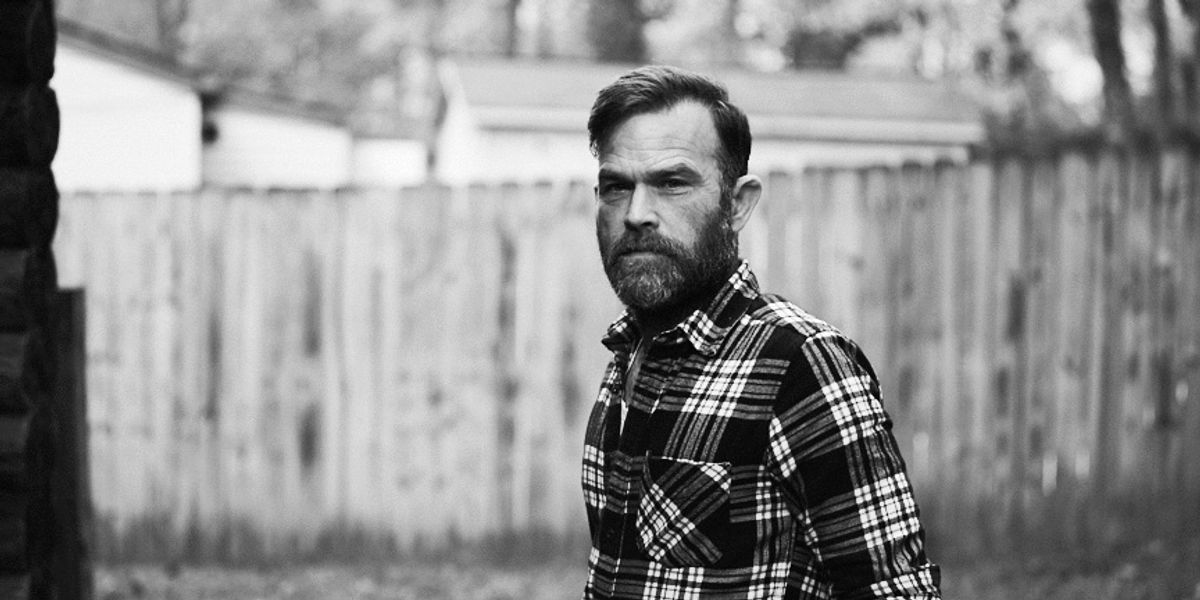The first sound you hear on Waylon Payne’s new album, Blue Eyes, The Harlot, The Queer, The Pusher & Me, is a young boy enthusiastically proclaiming, “OK, ready! 14, 22, 89, go!” That is followed by a single guitar chord, as Payne sings, “Mama’s been crying in the kitchen / Daddy’s done left in the truck / He’s headed down to the ABC store / To get a little more fucked up.”
Obviously, Waylon Payne knows how to a) name an album and b) set a scene. Fortunately, his follow-through is strong as well. Blue Eyes, The Harlot, The Queer, The Pusher & Me, an album about addiction, friendship, fatherhood, and redemption, is one of the best albums released in 2020.
Payne, the son of country singer Sammi Smith and guitarist Jody Payne, best known as a member of Willie Nelson’s band, the Family, has been kicking around for a while. He recorded a debut album, The Drifter, way back in 2004. A year later, Payne played Jerry Lee Lewis in the Johnny Cash biopic, Walk the Line. He’s also racked up a number of songwriting credits, including “All the Trouble”, a co-write with Lee Ann Womack and Adam Wright that led to a Grammy nomination.
Payne also struggled with addiction, and Blue Eyes, The Harlot, The Queer, The Pusher & Me reflects these struggles. “Sins of the Father”, the opening track with the odd count-off, lists some of those addictions (beer, whisky, coke, speed, etc.), but then provides some hope: “But that all changed when I saw my best friend turn from a guy into a dad. Lord, watching him give it all to raise that baby made me want to be a better man.” As it happens, the kid counting off the song is the real-life baby in question.
“Sins of the Father” is a suitably raucous opener for the album, but it’s also somewhat deceptive since much of Blue Eyes exists in a much more languid, atmospheric place. That is apparent beginning with the second track, “Dead on a Wheel”, a call for compassion. Musically, the song subtly evokes the feel of Linda Ronstadt’s recording of “Blue Bayou”, but the music gradually intensifies as the song ramps up to Payne’s lyrical message. “Hey, what if we started leaning on each other / Remember that it’s faith and kindness and love that help us make it through / Hey, if we all started learning how to love one another…it could get better.”
Payne’s difficult times are reflected in several tracks in the middle of the album, notably “Dangerous Criminal”, the emotionally devastating “Shiver”, and his take on the Womack collaboration, “All the Trouble”. Payne’s version of the song matches some electric guitar might with orchestrations reminiscent of Paul Buckmaster’s classic work on Elton John’s Madman Across the Water album.
Payne begins to see the light in the homestretch of Blue Eyes “The sunshine is peeking through my window / I pulled back the curtains and let it all in,” sings Payne on “Back from the Grave”, the first of four soulful ballads that reflect on healing and gratitude. Payne closes Blue Eyes with the elegiac “Old Blue Eyes”, which serves as both a tribute to a lost friend and as a way to tie together the beauty and sadness permeates the album.
While Payne’s lyrics are evocative and detailed, they’re not so specific to his situation that they’re not relatable. As it happens, Payne wrote a series of essays as part of the publicity materials for Blue Eyes that explicitly tell the stories behind each song. I’m not certain these essays are currently available online or with physical copies of the album, and it’s not necessary to read them to appreciate the album. Taken together, though, the essays point Payne in the directions of yet another career as a memoirist.


